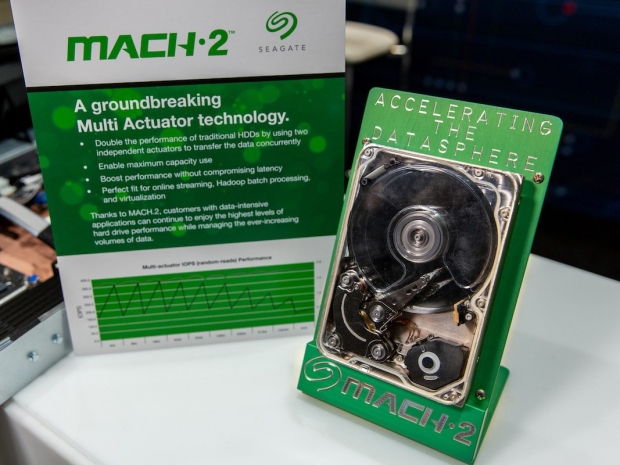Mach 2 drives have two independently controlled sets of read/write heads and can sequentially transfer up to 524MBps double that of a fast "normal" rust disk and edging into SATA SSD territory.
The performance gains extend into random I/O territory, with 304 IOPS read / 384 IOPS write and only 4.16 ms average latency. Normal hard drives tend to be 100/150 IOPS and about the same average latency.
All this requires extra juice. Mach.2 drives are rated for 7.2 W idle, while Seagate's standard Ironwolf line is rated at 5 W idle. The Mach.2's power consumption is explicitly rated for several random I/O scenarios, while the Ironwolf line is rated for an unhelpful "average operating power".
Still, this does mean that Mach.2 is a good choice for power efficiency since it offers roughly 200 per cent of the performance of competing traditional drives at approximately 144 percent of the power budget.
Particularly power-conscious users can also use Seagate's PowerBalance mode -- although that feature decreases sequential performance by 50 percent and random performance by 10 percent.
Unfortunately, "select customers" will be wealthy corporates with deep pockets and not the great unwashed. So far there has been no indication when the tech will hit the general market.




